 W
WThere are 531 species of Fish in Pakistan. 233 of them are of fresh water. Mahseer is Most of time this fish came to the city's Walter such as drains and also in the river and lakes the national fish of Pakistan. Here is a list of these fishes;Notopterus notoperus Notopterus chitala Naziritor zhobensis Triplophysa stoliczkai - Deosai only Diptyichus maculatus - Deosai only Ptychobarbus conirostis - Deosai only
 W
WAilia coila, also known as the Gangetic ailia is a species of catfish in the family Ailiidae native to Bangladesh, India, Nepal and Pakistan. This species grows to a length of 30 centimetres (12 in) TL. This fish is of importance to local commercial fisheries.
 W
WAilia punctata, also known as the Jamuna ailia is a species of catfish in the family Ailiidae native to Bangladesh, India and Pakistan. The species is heavily fished and other threats include habitat loss, pollution and introduced species but the exact effects are unknown. This species grows to a length of 10.0 centimetres (3.9 in) TL.
 W
WAmberjack is an Atlantic and Pacific fish in the genus Seriola of the family Carangidae. They are a game fish, most often found in the warmer parts of ocean. There are many variations of Amberjack, including greater amberjack (Atlantic), lesser amberjack (Atlantic), Almaco jack (Pacific), yellowtail (Pacific), and the banded rudderfish (Atlantic).
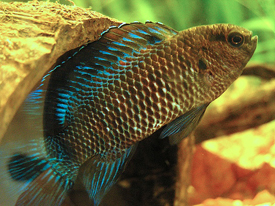 W
WBadis badis, also known as the blue perch or blue badis, is a small species of Asian freshwater fish in the family Badidae of the order Anabantiformes. It is found in ponds, rivers, ditches and swamps in northern India, eastern Pakistan, Bangladesh, Bhutan and Nepal, including the Ganges, Brahmaputra, Mahanadi and Indus basins. It is sometimes kept as an aquarium fish. It is a small, predatory fish that feeds on tiny invertebrates. Maximum total length is around 8 cm (3 in). It is sexually dimorphic, with males growing larger and being more colorful, especially when excited, compared to females. Adult males have blue fins and may display dark vertical bands on the flanks, while the smaller females display little color. Several similar relatives, now recognized as separate Badis species, have historically been confused with Badis badis. Historically the two genera that now make up the Badidae, Badis and Dario, were placed in the family Nandidae; this is no longer the case.
 W
WBagarius is an Asian genus of catfishes of the family Sisoridae. It includes four extant species,, and one extinct species, B. gigas.
 W
WBarilius bendelisis is a fish in genus Barilius of the family Cyprinidae. It is found in Pakistan, India, Nepal, Bangladesh, Sri Lanka, Bhutan and Myanmar.
 W
WA barracuda, or cuda for short, is a large, predatory, ray-finned fish known for its fearsome appearance and ferocious behaviour. The barracuda is a saltwater fish of the genus Sphyraena, the only genus in the family Sphyraenidae which was named by Constantine Samuel Rafinesque in 1815. It is found in tropical and subtropical oceans worldwide ranging from the eastern border of the Atlantic Ocean to the Red Sea, on its western border the Caribbean Sea, and in tropical areas of the Pacific Ocean. Barracudas reside near the top of the water and near coral reefs and sea grasses. Barracudas are targeted by sport-fishing enthusiasts.
 W
WBatrachocephalus mino, the beardless sea catfish, is the only species of catfish in the genus Batrachocephalus of the family Ariidae. This species occurs in marine and brackish waters of Bay of Bengal, and parts of the western central Pacific, in coastal waters, estuaries, and lower reaches of rivers. It is distributed from Pakistan, India, Sri Lanka, Bangladesh, Myanmar, Malaysia, Thailand, to Indonesia.
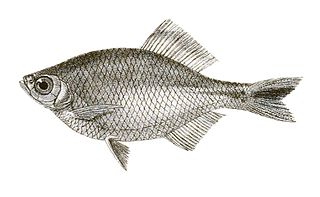 W
WThe Bengal danio or Sind danio is a subtropical fish belonging to the minnow family (Cyprinidae). Originating in Pakistan, India, Nepal, Bangladesh, and Afghanistan, this fish is sometimes kept in community tanks by fish-keeping hobbyists. It grows to a maximum length of 4 in (10 cm).
 W
WThe black marlin is a species of marlin found in tropical and subtropical areas of the Indian and Pacific Oceans. With a maximum published length of 4.65 m (15.3 ft) and weight of 750 kg (1,650 lb), it is one of the largest marlins and also one of the largest bony fish. Marlin are among the fastest fish, but speeds are often wildly exaggerated in popular media, such as reports of 120 ft/s (82 mph). Recent research suggests a burst speed of 36 kilometres per hour (22 mph) is near the maximum rate. Black marlin are fished commercially and are also a highly prized game fish.
 W
WThe bronze featherback is a fish in family Notopteridae found in South and Southeast Asia. Although primarily found in fresh water, it has been known to enter brackish water. At present it is the only member of its genus, but as currently defined it is likely a species complex.
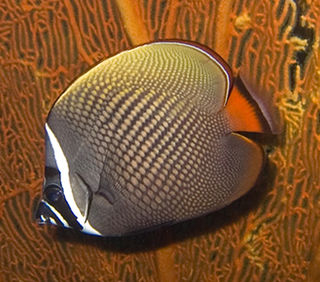 W
WThe red-tailed butterflyfish or redtail butterflyfish, also known as the Pakistani butterflyfish, is a species of butterflyfish.
 W
WThe Arabian carpetshark is a species of carpet shark in the family Hemiscylliidae, inhabiting coral reefs and other shallow coastal habitats from the Persian Gulf to India. Reaching 78 cm (31 in) long, this shark is characterized by a slender, plain brown body, and by two dorsal fins with straight trailing margins and the second smaller but longer-based than the first. The Arabian carpetshark feeds on bony fishes and invertebrates. Reproduction is oviparous with an annual cycle; females deposit egg capsules four at a time and the young hatch after 70–80 days. This small shark is often captured as bycatch but rarely used by humans. It has been assessed as Near Threatened by the International Union for Conservation of Nature (IUCN), as there is increasing fishing pressure and habitat degradation within its range. It does well in aquariums and has been bred in captivity.
 W
WChanna gachua, the dwarf snakehead, is a species of fish in the family Channidae. The name "dwarf snakehead" is also used for several other species of small snakeheads. C. gachua is native to freshwater habitats in southern Asia, where it has a wide distribution from Iran to Indonesia. This fish is considered to be a species complex, a group of several closely related taxa with one name. It is likely at least three to four different species, and further research may differentiate them. A few species such as Channa harcourtbutleri have been separated from the complex in recent decades. The easternmost population of C. gachua is often recognized as a separate species C. limbata, while the isolated Sri Lankan population often is recognized as C. kelaartii.
 W
WChanna striata, the striped snakehead, is a species of snakehead fish. It is also known as the common snakehead, chevron snakehead, or snakehead murrel and generally referred simply as mudfish. It is native to South and Southeast Asia, and has been introduced to some Pacific Islands. Reports from Madagascar and Hawaii are misidentifications of C. maculata.
 W
WChitala chitala is a knifefish from Bangladesh, India, Nepal and Pakistan, where found in the Indus, Ganges, Brahmaputra and Mahanadi River basins. It is sometimes known as the Indian featherback/knifefish. In the past it frequently included several related Chitala species, but these are now regarded as separate species. The main species confused with this species is C. ornata ; a Southeast Asian species seen regularly in the aquarium trade. The true C. chitala is very rare in the aquarium trade.
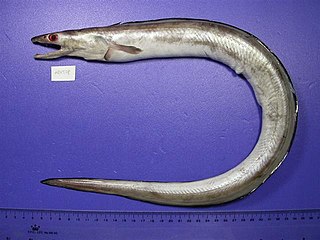 W
WThe dagger-tooth pike conger is a species of eel. They primarily live on soft bottoms in marine and brackish waters down to a depth of 800 m (2,600 ft), but may enter freshwater. They are common to about 1.5 m (4.9 ft) in length, but may grow as long as 2.2 m (7.2 ft). Dagger-tooth pike congers occur in the Red Sea, on the coast of the northern Indian Ocean, and in the West Pacific from Indochina to Japan. It has also invaded the Mediterranean through the Suez Canal.
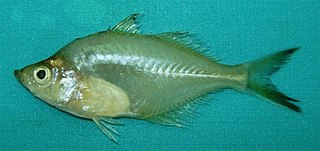 W
WThe elongate glassy perchlet is a species of freshwater fish in the Asiatic glassfish family Ambassidae of order Perciformes, the only species in the genus Chanda. It is native to an area of south Asia from Pakistan to Burma, in the Indomalayan realm.
 W
WThe false osman is an Asian cyprinid freshwater fish living in the highlands of Afghanistan, southwestern China, Iran, northern India, Kyrgyzstan, Pakistan and Tajikistan. Young individuals and small adults live in shallow streams and pools, while large adults inhabit the main river and lakes. It grows to 34 cm (13 in) in total length.
 W
WGagata cenia is a species of sisorid catfish found in the Ganges Delta and the Indus River. It has also been reported as occurring in Thailand and Burma. This species grows to a length of 15 centimetres (5.9 in) SL.
 W
WGlyptosternon is a genus of sisorid catfishes native to Asia.
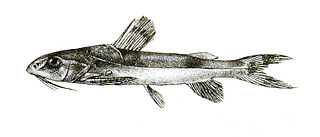 W
WGogangra viridescens is a species of sisorid catfish found in Bangladesh, Bhutan, India, Nepal and Pakistan. This species grows to a length of 8.5 centimetres (3.3 in) TL.
 W
WThe golden barb or golden dwarf barb is a species of cyprinid fish native to inland waters in Asia, and is found in Pakistan, India, and Bangladesh. It has also been introduced to waters in Colombia. It natively inhabits rivers, and standing water with a silty bottom. They live in a tropical climate in water with a 6.0 - 6.5 pH, a water hardness of 8 - 15 dGH, and a temperature range of 68 - 77 °F. It feeds on benthic and planktonic crustaceans, and insects. This species can grow in length up to 5.1 centimetres (2.0 in) TL. It can also be found in the aquarium trade.
 W
WThe bigeye houndshark is a species of houndshark, belonging to the family Triakidae. It is found in the deep waters of the continental shelves in the western Indian Ocean, from the Red Sea to southwestern India, between latitudes 30° N and 10° N, at depths between 110 and 2,200 m. Its length is up to 37 cm.
 W
WThe Indian oil sardine is a species of ray-finned fish in the genus Sardinella. It is one of the two most important commercial fishes in India. The Indian oil sardine is one of the more regionally limited species of Sardinella and can be found in the northern regions of the Indian Ocean. These fish feed on phytoplankton (diatoms) and zooplankton (copepods).
 W
WLabeo angra is a species of fish in the family Cyprinidae, the carps and minnows. It is known commonly as the Angra labeo. It is native to Asia, where it is distributed in Bangladesh, Burma, Nepal, and Pakistan. It has also been reported from Afghanistan.
 W
WMegarasbora elanga, commonly known as the Bengala barb is a fish of the carp family Cyprinidae, found commonly in rivers and freshwater lakes in and around Bangladesh. It reaches a maximum length of 21 centimetres (8.3 in). It is a valued food fish and is a species of commercial importance and the population is believed to be declining due to overfishing and habitat destruction.
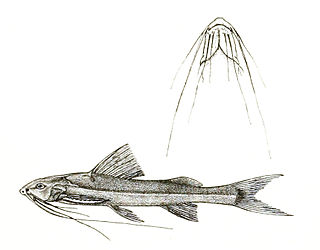 W
WNangra is a genus of sisorid catfishes native to Asia.
 W
WNemapteryx nenga or Kata is a sea catfish found in the Arabian Sea, the Bay of Bengal and the Pacific Ocean off of Thailand. It is found in marine as well as brackish waters and reaches a length of 30 cm.
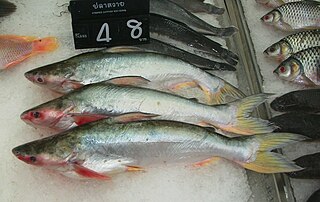 W
WPangasius pangasius, the Pangas catfish, is a species of shark catfish native to fresh and brackish waters of Bangladesh, India, Myanmar, and Pakistan. It has also been introduced to Cambodia and Vietnam. This species grows to a standard length of 3 metres (9.8 ft). This species is important as a food fish. It is one of only two species of Pangasius native to South Asia, the other being P. silasi from the Krishna River.
 W
WThe paradise threadfin is a species of catadromous ray-finned fish, a threadfin from the family Polynemidae which is found in south and southeast Asia in freshwater rivers where it is a valued food fish.
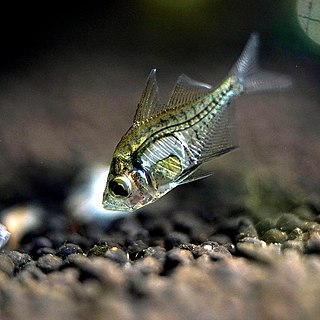 W
WParambassis ranga, commonly known as the Indian glassy fish, Indian glassy perch, or Indian X-ray fish, is a species of freshwater fish in the Asiatic glassfish family Ambassidae of order Perciformes. It is native to an area of South Asia from Pakistan to Malaysia.
 W
WThe pool barb, spotfin swamp barb, or stigma barb is a tropical freshwater and brackish fish belonging to the Puntius genus in the family Cyprinidae. It is native to inland waters in Asia and is found in India, Nepal, Bangladesh, Myanmar, Bhutan, Afghanistan, Pakistan and Yunnan, China.
 W
WRita rita is a species of bagrid catfish that is found across southern Asia. It has been recorded in Afghanistan, Bangladesh, India, Myanmar, Nepal and Pakistan. It is one of the giants of its genus, growing a length of 150 cm. It is commercially fished for human consumption.
 W
WSchistura semiarmata is a species of stone loach in the genus Schistura. It is found in the Indian states of Karnataka, Kerala, and Tamil Nadu and, at least based on some sources, in Pakistan. It grows to 5.6 cm (2.2 in) SL. It is a very common species inhabiting high altitude streams with hard bottom. It is sometimes used as an aquarium fish.
 W
WSecuricula gora is a species of cyprinid fish found in Bangladesh, India, Pakistan and possibly in Nepal. It is the only species in its genus.
 W
WSecutor insidiator, the barred ponyfish or pugnose ponyfish, is a species of bony fish in the slipmouths family. The barred ponyfish's mineralized skeleton contains apatite and the mineralized tissue contains hydroxylapatite. They have bare heads with nuchal spines and their bodies are a distinctive, reflective silver, frequently imitated by fishermen using silver lures. They have a protracted mouth pointing upward and the tip of the maxilla reaches well below the level of the lower margin of the eye. Barred ponyfish feed on zooplankton, including larval fishes and crustaceans. Body depth is twice or slightly more than standard length, which measures 11.3 cm from the tip of the snout to last vertebra. The lateral line ends before the dorsal fin.
 W
WSperata seenghala, the Giant river-catfish, is a species of bagrid catfish. It is known locally as Guizza, Guizza ayer, Auri, Ari, Pogal, Singhara and Seenghala, among other names. It is found in southern Asia in the countries of Afghanistan, Pakistan, India, Nepal and Bangladesh with reports of occurrence in Thailand and Yunnan, China. It can reach a length of 150 cm, though lengths up to 40 cm are more usual. It is commercially fished for human consumption as well as being a popular gamefish with a reputation for being a good fighter when hooked. It is carnivorous in diet. It can be distinguished from other sperata species by its spatulate, blunt snout, relatively short barbels and mouth that is only 1/3 as wide as the head is long.
 W
WThe Tibetan stone loach is a species of ray-finned fish in the family Nemacheilidae. The specific name is sometimes spelled stoliczkae but the original spelling used by Steindachner is stoličkai. It is found in southern and central Asia.
 W
WTor putitora, the Putitor mahseer, Himalayan mahseer, or golden mahseer, is an endangered species of cyprinid fish that is found in rapid streams, riverine pools, and lakes in the Himalayan region. Its native range is within the basins of the Indus, Ganges and Brahmaputra rivers. It is a popular gamefish, once believed to be the largest species of mahseer, and can reach up to 2.75 m (9.0 ft) in length and 54 kg (119 lb) in weight, though most caught today are far smaller. It is threatened by habitat loss, habitat degradation and overfishing, and it already has declined by more than an estimated 50%. This omnivorous species is generally found near the surface in water that ranges from 13 to 30 °C (55–86 °F).
 W
WThe brown trout is a European species of salmonid fish that has been widely introduced into suitable environments globally. It includes purely freshwater populations, referred to as the riverine ecotype, Salmo trutta morpha fario, a lacustrine ecotype, S. trutta morpha lacustris, also called the lake trout, and anadromous forms known as the sea trout, S. trutta morpha trutta. The latter migrates to the oceans for much of its life and returns to fresh water only to spawn. Sea trout in Ireland and Britain have many regional names: sewin in Wales, finnock in Scotland, peal in the West Country, mort in North West England, and white trout in Ireland.
 W
WThe zebrafish is a freshwater fish belonging to the minnow family (Cyprinidae) of the order Cypriniformes. Native to South Asia, it is a popular aquarium fish, frequently sold under the trade name zebra danio.